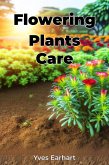"Terrarium Plants Tips" offers a fascinating exploration of the miniature worlds that thrive within glass enclosures, combining scientific understanding with practical gardening expertise. The book takes readers on a journey from the accidental discovery of terrariums by Nathaniel Ward in 1842 to their modern applications in urban gardening, revealing how these self-contained ecosystems function and flourish.
At its core, the guide focuses on three essential elements: strategic plant selection, ecosystem balance, and sustainable maintenance practices, making it an invaluable resource for both novice and experienced gardeners. The book systematically builds knowledge through well-structured chapters, starting with fundamental concepts of closed ecosystems before diving into specific plant profiles and cultivation techniques.
Readers learn to evaluate crucial factors like light requirements, growth patterns, and root systems while gaining practical insights into substrate layering, humidity control, and pest management. What sets this guide apart is its seamless integration of botanical science with hands-on applications, including innovative approaches like bioactive systems and microorganism communities that support plant health.
Through its comprehensive approach, the book addresses the growing interest in indoor gardening among urban dwellers while serving as an educational tool for environmental science. It emphasizes sustainable practices, such as using recycled containers and locally sourced materials, while providing detailed troubleshooting guides and maintenance schedules. The text's methodical progression ensures readers gain both the theoretical knowledge and practical skills needed to create and maintain thriving terrarium ecosystems, whether they prefer tropical, desert, or woodland arrangements.
At its core, the guide focuses on three essential elements: strategic plant selection, ecosystem balance, and sustainable maintenance practices, making it an invaluable resource for both novice and experienced gardeners. The book systematically builds knowledge through well-structured chapters, starting with fundamental concepts of closed ecosystems before diving into specific plant profiles and cultivation techniques.
Readers learn to evaluate crucial factors like light requirements, growth patterns, and root systems while gaining practical insights into substrate layering, humidity control, and pest management. What sets this guide apart is its seamless integration of botanical science with hands-on applications, including innovative approaches like bioactive systems and microorganism communities that support plant health.
Through its comprehensive approach, the book addresses the growing interest in indoor gardening among urban dwellers while serving as an educational tool for environmental science. It emphasizes sustainable practices, such as using recycled containers and locally sourced materials, while providing detailed troubleshooting guides and maintenance schedules. The text's methodical progression ensures readers gain both the theoretical knowledge and practical skills needed to create and maintain thriving terrarium ecosystems, whether they prefer tropical, desert, or woodland arrangements.









